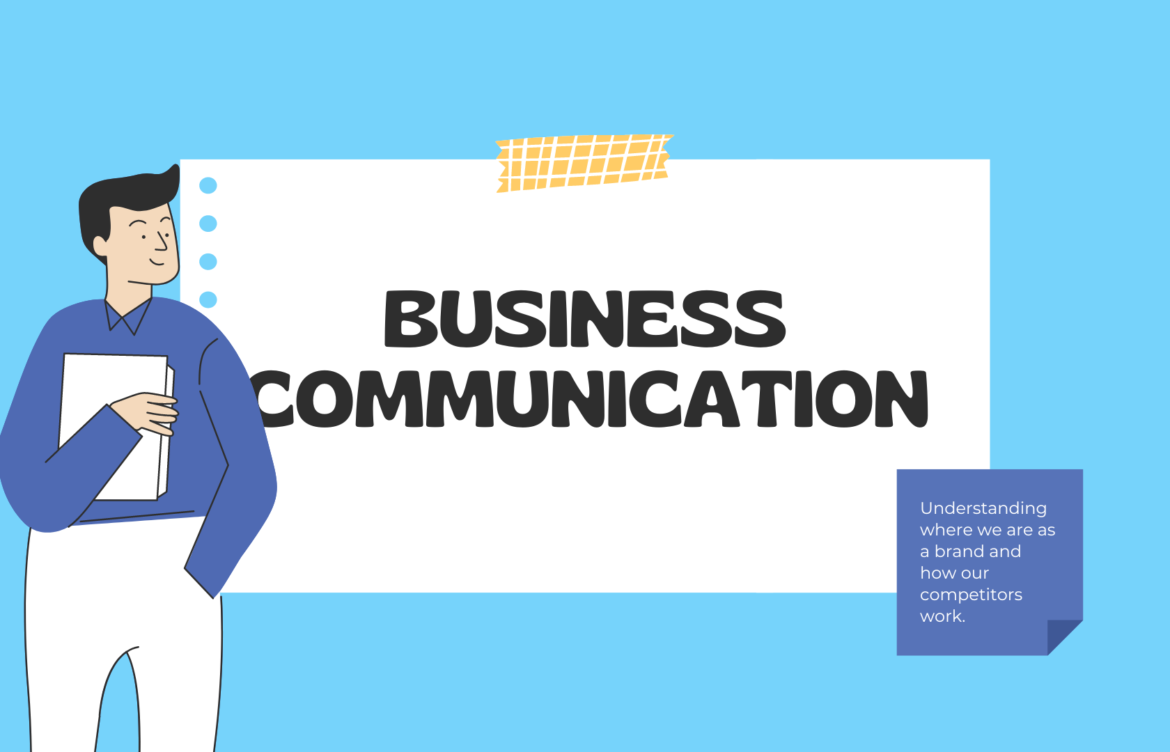
The Art of Effective Business Communication: Strategies for Success
In today’s fast-paced business landscape, effective communication is the cornerstone of success. Whether you’re interacting with clients, colleagues, or stakeholders, your ability to convey your ideas clearly and persuasively can make all the difference. In this article, we’ll delve into the art of effective business communication, exploring key strategies that can propel your career and business forward.
1. Understanding the Foundations of Business Communication
Before we dive into strategies, it’s important to grasp the fundamental elements of business communication. It’s not just about words; it’s about conveying intent, understanding your audience, and building strong relationships. Clear, concise, and contextually relevant messages are essential.
2. Tailoring Your Message to Your Audience
One-size-fits-all communication rarely works in the business world. Tailoring your message to resonate with your specific audience can greatly enhance its impact. Consider the knowledge level, needs, and preferences of your recipients. A message aimed at top-level executives will differ from one intended for technical teams.
3. The Power of Active Listening
Communication isn’t a one-way street. Active listening is a skill that can transform your interactions. By genuinely engaging with what others are saying, you show respect and foster deeper connections. This, in turn, can lead to more meaningful collaborations and partnerships.
4. Embracing Visual Communication
The modern business landscape is flooded with information. To cut through the noise, consider incorporating visual elements into your communication. Visual aids like graphs, charts, and infographics can make complex data more understandable and memorable.
5. Constructive Feedback: Giving and Receiving
Feedback is crucial for growth, but it must be delivered and received effectively. When providing feedback, focus on specific behaviors and their impact, and offer suggestions for improvement. When receiving feedback, maintain an open mind and view it as an opportunity to enhance your skills.
6. The Art of Persuasion
Whether you’re pitching an idea or negotiating a deal, persuasion is a valuable skill. Use storytelling techniques to illustrate your points, appeal to emotions, and highlight the benefits of your proposal. However, always ensure your persuasion is backed by facts and logic.
7. Written Communication: Crafting Compelling Messages
In a digital age, written communication is more important than ever. Whether it’s an email, a report, or a social media post, crafting compelling messages is key. Keep your writing concise, organized, and error-free. Utilize formatting tools such as bullet points and headings to enhance readability.
8. Navigating Cross-Cultural Communication
Globalization has brought diverse cultures together in the business world. Navigating cross-cultural communication requires sensitivity and awareness. Research the cultural norms of your counterparts to avoid misunderstandings and show respect for their traditions.
9. Leveraging Technology Wisely
Technology has revolutionized how we communicate. From video conferencing to instant messaging, various tools can streamline communication. However, use technology wisely. Choose the appropriate platform for each message, and be mindful of data security and privacy.
10. Effective Crisis Communication
In times of crisis, how you communicate can either mitigate or exacerbate the situation. Transparency, empathy, and timely updates are essential. Address concerns promptly and provide solutions, demonstrating your commitment to resolving the issue.
11. The Role of Nonverbal Communication
Words aren’t the only aspect of communication; nonverbal cues play a significant role. Your tone of voice, facial expressions, and body language can convey emotions and attitudes. Pay attention to these cues, both in your own communication and when interpreting others’.
12. Mastering Time Management in Communication
In a busy work environment, time is a precious resource. Practice time management in your communication efforts. Be concise, set clear objectives for meetings, and avoid unnecessary tangents that can derail productive conversations.
13. Encouraging Open Dialogue
Foster a culture of open dialogue within your organization. Encourage employees to share their ideas, concerns, and suggestions without fear of retribution. This can lead to innovative solutions and a more engaged workforce.
14. Personal Development for Effective Communication
Continuous improvement is vital. Invest in personal development to enhance your communication skills. Attend workshops, read books, and seek mentorship to refine your abilities and stay updated with evolving communication trends.
15. Measuring Communication Effectiveness
To ensure your communication strategies are working, you need to measure their effectiveness. Use metrics like response rates, engagement levels, and outcomes to gauge how well your messages are resonating and adjust your approach accordingly.
In conclusion, the art of effective business communication is multifaceted and dynamic. By understanding your audience, embracing various communication mediums, and continuously improving your skills, you can navigate the complex world of business communication with finesse. Remember, communication isn’t just about words; it’s about forging connections and achieving your professional goals.
